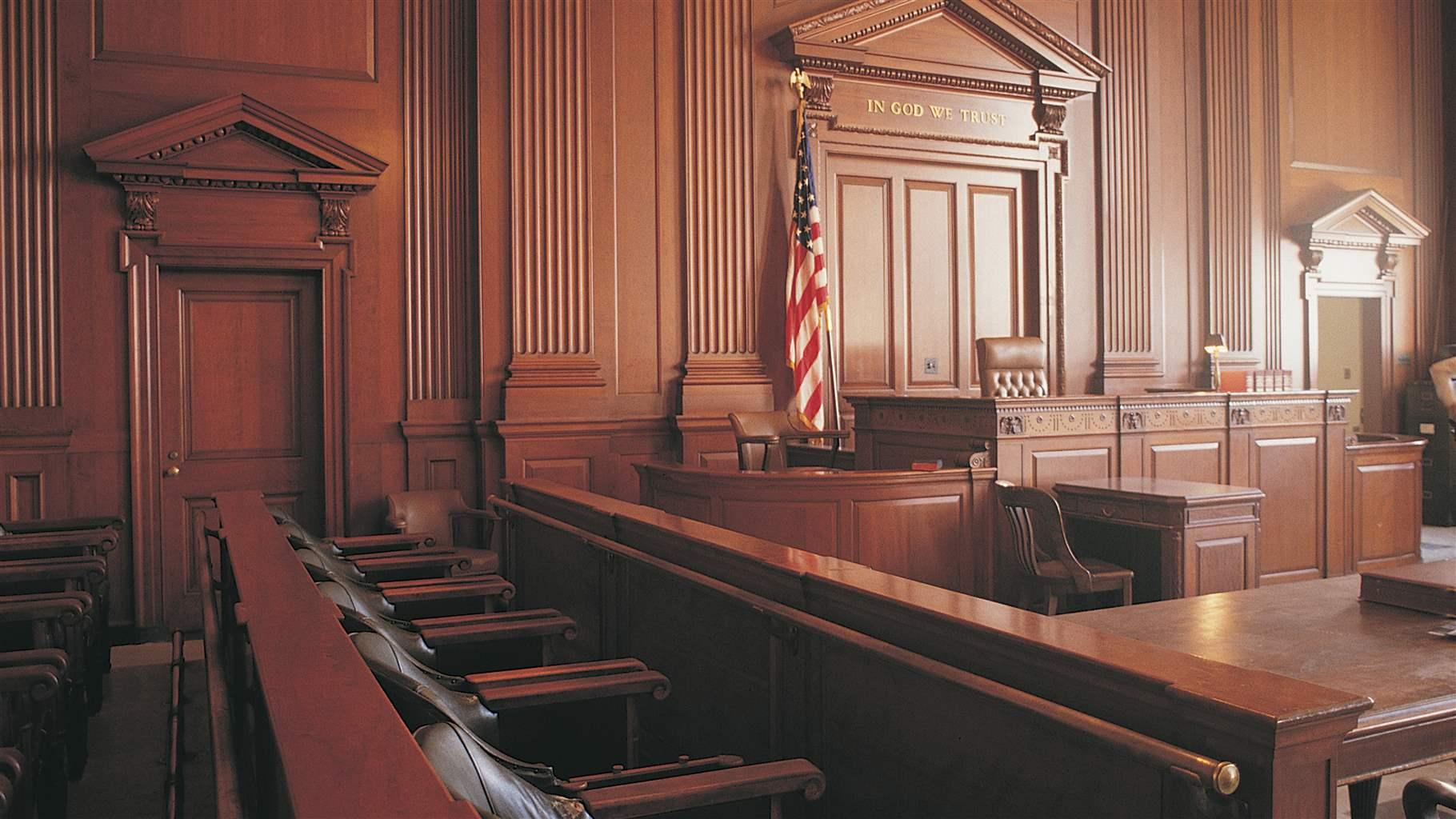How to Get More People to Show Up for Court
3 North Carolina counties examine appearance rates and proposals to improve them

Most people show up for their day in court, but those who don’t can face fines, jail time, and other penalties. Those who miss court aren't necessarily ignoring their cases – lack of transportation, family obligations, or simply forgetting to appear can be to blame. But because missing court has serious consequences for individuals and the court system as a whole, jurisdictions throughout the country are seeking ways to get more people through the courthouse doors.
To tackle the problem of missed court dates in North Carolina, particularly for low-level offenses such as minor driving violations, court stakeholders in New Hanover, Robeson, and Orange counties created teams to work with the North Carolina Court Appearance Project. In August 2021, each county convened a group of judges, prosecutors, public defenders, clerks, and members of law enforcement to study nonappearance rates and root causes and to propose solutions.
With technical assistance support from The Pew Charitable Trusts and the University of North Carolina School of Government Criminal Justice Innovation Lab, the counties examined local court and jail data and analyzed court practices and procedures. They then devised policy solutions suited to the needs of their communities and courtrooms, although many are broadly applicable elsewhere. This article provides a summary of the North Carolina Court Appearance Project’s final report; the graphics are variations of those included in the publication.
The data showed that 1 in 6 court cases in the state involved a missed appearance—which amounts to nearly a quarter million missed hearings a year. The scale of these missed appearances has an outsized impact on courts and communities, draining court resources and penalizing North Carolinians for failing to appear for low-level infractions such as traffic violations.
In fact, all but one of the top 10 offenses most likely to result in a missed court date were related to driving infractions: Seven were for minor administrative driving offenses such as expired tags and registration, as opposed to reckless endangerment, driving under the influence, or other more serious moving violations. (See Table 1.) When someone misses court for a motor vehicle offense, state law requires the Department of Motor Vehicles to revoke the individual’s license: 1 in 10 North Carolinians have a suspension because of a missed court date. And that can hamper their ability to get to work, earn a living, and care for their families.
Table 1
In North Carolina, Most Missed Court Appearances Linked to Minor Driving Offenses
Nonappearances ranked by offense for criminal cases, 2015-2020
| 1 | Driving while license revoked—not impaired revocation |
| 2 | Expired registration card or tag |
| 3 | Speeding |
| 4 | No operator’s license |
| 5 | Operating a vehicle with no insurance |
| 6 | Fictitious or altered title or registration car or tag |
| 7 | Misdemeanor larceny |
| 8 | Driving or allowing driving with no registration |
| 9 | Canceled, revoked, or suspended certified tag |
| 10 | Reckless driving to endanger |
Note: If a case included multiple offenses, the most serious offense was used for analysis.
Source: UNC School of Government Criminal Justice Innovation Lab and North Carolina Criminal Information System for the North Carolina Court Appearance Project
In addition to the consequences for individuals, no-shows are a significant drain on law enforcement resources.
In each of the three counties, judges often respond to a missed appearance by issuing a warrant for arrest, also called a bench warrant or an order for arrest. This common court mechanism helps to compel someone to appear in court and is statutorily allowed throughout the country. These warrants can follow individuals for years, and if they are pulled over—even for something as minor as a broken taillight—law enforcement can take them to jail.
Two of the counties in the project examined their data on who was admitted to jail in their jurisdiction. They discovered that more people were booked into jail for failing to appear than for any other reason—even more than driving while intoxicated and simple assault. (See Table 1.) In fact, about 1 in 6 jail bookings occurred solely because of a failure to appear in the two counties with available data.
The North Carolina Court Appearance Project research also found that nonappearances affect court efficiency. No-shows can lead to large numbers of rescheduled hearings, even if they occur only in a small percentage of overall cases. And that burdens court personnel, inconveniences people involved as witnesses and victims, and generally slows the system for all court users. But the analysis also uncovered that the longer a case remained open, the higher the likelihood of a no-show, perpetuating a vicious cycle.
Table 2
Missing Court for Misdemeanors Tops Reasons for Jail Bookings
Top 3 reasons in North Carolina’s New Hanover and Orange counties, 2019-2021
Orange County
| Rank | Most Common Reasons for Jail Booking |
|---|---|
| 1 | Order for arrest (OFA) for failing to appear on a misdemeanor |
| 2 | Assault on a female |
| 3 | Driving while impaired |
New Hanover County
| Rank | Most Common Reasons for Jail Booking |
|---|---|
| 1 | OFA for failing to appear on a misdemeanor |
| 2 | Driving while impaired |
| 3 | Probation violation on a felony |
Note: Multiple reasons may be associated with a single booking. OFA for failure to appear was counted only if it was the sole reason identified at booking.
Source: New Hanover County and Orange County jail data, North Carolina Court Appearance Project
The data also shows that nonappearance rates, and the consequences associated with missing court, affect different groups of people differently. Young adults, for example, were twice as likely to miss court as those age 60 or older. Black North Carolinians, meanwhile, make up just 22% of the state’s population, but 40% of criminal cases and 49% of missed court dates. (See Table 2.) Both statistics may suggest that members of these groups face significant barriers in getting to court and may have less confidence in the court’s ability to render a fair decision in their cases.
Although limited research exists on what works to improve court appearance rates, what is available suggests that focusing more on supportive and user-friendly services, rather than additional penalties, can make a difference.
With that in mind, the Court Appearance Project assessed the unique needs of their respective counties and devised five key buckets of solutions. Courts should:
- Help people understand the importance of appearing and remembering to show up through text message reminders, forms that are easy to read and understand, and “palm cards,” which provide individuals with clear information about getting to court, accompanying citations.
- Address barriers to appearance with transportation assistance, virtual appearance options, and other tools.
- Make court more user-friendly by scheduling hearings in smaller time blocks and offering walk-in hours, services for high-need groups, and shorter disposition times.
- Build community trust through more diverse court personnel and community engagement.
- Reduce collateral harms through fewer unnecessary orders for arrest, license restoration assistance, and updating laws.
The three counties are working to implement these solutions. Robeson County, which had a 35% nonappearance rate at the start of the effort, plans to distribute palm cards and brochures with instructions on using the county’s pickup and drop-off van service. The rural county also decided to revamp its processes around orders for arrest, so that when someone misses court, they have a grace period before a warrant for their arrest is issued.
Orange County chose to schedule select court hearings in 1.5-hour blocks to reduce the time people spend in court waiting for their case to be called. They’ve also created wallet-size palm cards with simple and clear information about getting to court to help people understand what they need to do and how they can get help.
In New Hanover court leaders decided to work with local service organizations to determine ways they can work together to support high-need individuals facing criminal charges and help them get to court. They also created guidance for when arrest warrants should be issued following missed court dates and recommended against their use for administrative traffic cases.
All three jurisdictions are examining the use of text message reminders, license restoration services, and virtual court appearance options. The group made joint recommendations for state-level reforms as well, including simplifying court forms and ending the practice of revoking driving privileges for missing court.
Figuring out why people miss court and how to improve appearance rates is complex, but the North Carolina Court Appearance Project has made significant progress. The work by these counties should serve as a model for others interested in getting more people to court and making the court system work better for everyone.
Michelle Russell leads analysis of jails and courts data for The Pew Charitable Trusts’ public safety performance project.












